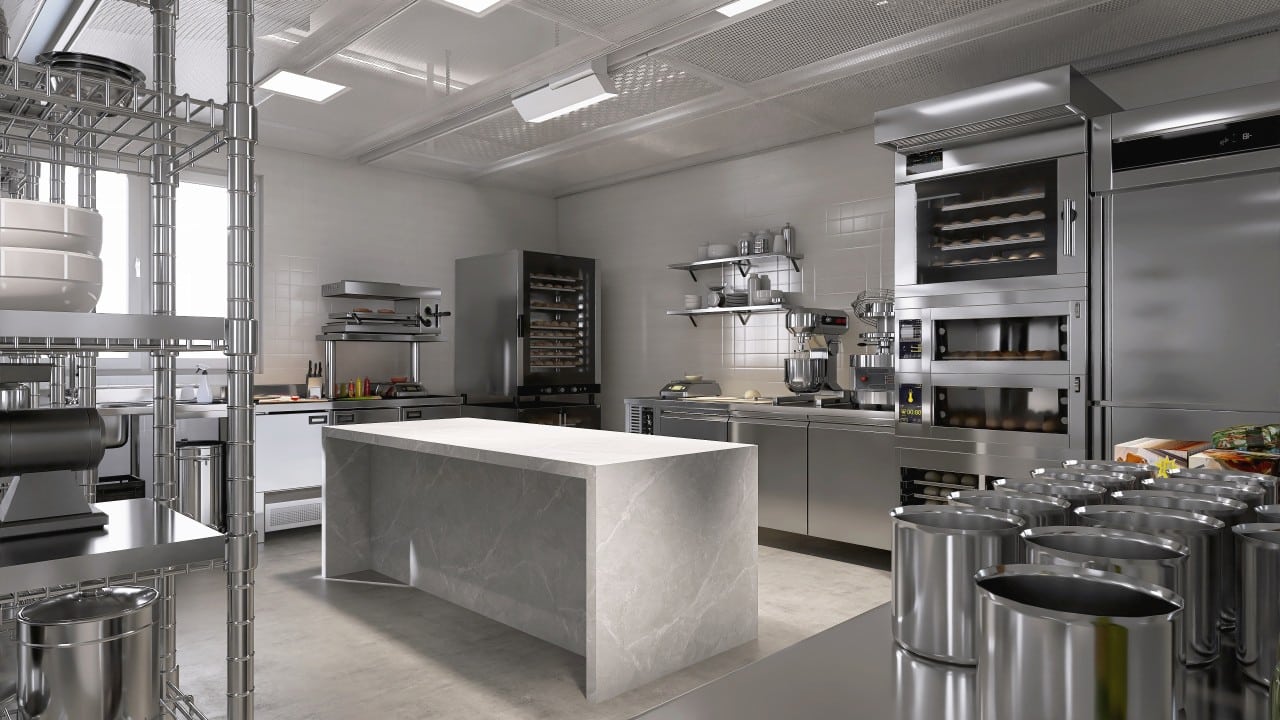Creation of Grease and Different Grease Types
In a commercial kitchen, the seemingly invisible buildup of grease is more than a housekeeping concern; it’s a hidden hazard that completes the deadly “fire triangle.” This triangle—comprising fuel, air, and ignition—represents the three essential elements for a fire to ignite and spread. While ignition sources like open flames, sparks, and high-heat cooking techniques are obvious in a busy kitchen, it’s the accumulation of grease and oil that forms the crucial fuel source within exhaust systems.
Despite the best efforts of grease filters, no system can capture every particle, allowing grease to penetrate and settle within ducts and fans. Over time, this combustible layer of grease transforms the exhaust system into a conduit for fire. Should a small flare-up escape the kitchen, this accumulated fuel can fan flames into an uncontrollable blaze that can reach temperatures of 1,000°C within minutes, risking catastrophic damage, significant business interruption, and even the survival of the establishment itself.
Where does the fat come from?
Cooking at high temperatures causes fats and oils in food to break down through a process called thermal decomposition. As heat increases, the molecular structure of the fats destabilises, turning them into vapours and tiny unstable airborne droplets. Because they’re lightweight, suspended in the air and easily carried by rising heat, they can quickly spread throughout the kitchen and into the exhaust system.
Different Types of Grease
In commercial kitchens, grease created during cooking can be classified into different types based on particle size, behaviour, and how it interacts with the environment. Understanding these categories helps in designing effective exhaust systems and setting appropriate cleaning practices. Here’s a breakdown:
- Spatter
Spatter refers to larger droplets of oil and grease that are released directly from the cooking surface, usually during high-heat processes like frying, grilling, or sautéing. These droplets are heavy, often visible as splashes or spots, and tend to settle quickly on nearby surfaces such as stovetops, countertops, and floors.
- Mist (Suspended Grease Particles)
Mist consists of smaller grease particles between 0.5 and 10 microns that become airborne and can remain suspended for a longer time before settling. Typically created during frying, sautéing and grilling, these particles are small enough to be carried by air currents, allowing them to travel farther than spatter. Mist particles can be captured by exhaust filters if the ventilation system is effective, but if not, they tend to settle on walls, ceilings, and equipment throughout the kitchen.
- Aerosolised Grease (Ultra-Fine Particles)
Aerosolised grease consists of ultra-fine particles created by high temperature frying and grilling, especially when fats reach their smoke point and break down. These particles are less than 1 micron in size, making them difficult to capture with standard grease filters. Aerosolised grease particles can linger in the air and travel through ductwork, potentially accumulating inside exhaust ducts and fans.
- Grease Vapour
Grease vapour is created when fats and oils reach high temperatures and vaporise, becoming a gaseous form of grease. This vapour can pass through exhaust filters without condensing, but as it cools within the ductwork or on kitchen surfaces, it condenses back into liquid grease. Grease vapour poses a significant fire risk as it tends to accumulate in ductwork, particularly if the ventilation system isn’t efficient.
In a commercial kitchen, spatter settles quickly and is managed through surface cleaning. Much more problematic are mist, aerosolised grease and vapour that may be hard to filter or bypass filters entirely
In our next article – Part 2, we discuss grease filters – the role of commercial kitchen exhaust systems.

